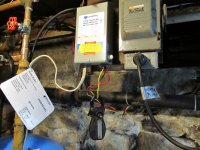turnkey4099
Elite Member
Must a well pump be submersed? Are some wells run with pump at top? Or would that take too much power to pull water up?
I have an irrigation pump with pipe about 200 feet into the lake and it does well. But I know horizontal pull and vertical are day and night.
They do not have to be submerged. A shallow well pump sets on top of the well head. There is a limit to how far above water it can be though. The theoretical 'lift' distance (suction) is about 33 ft above sea level. Due pipe restriction wear in pump, etc. etc. the working figure is about 25' and that is at seal level. There is a simple calculation for the loss in left for each foot above sea level. I don't recall what it is though.

